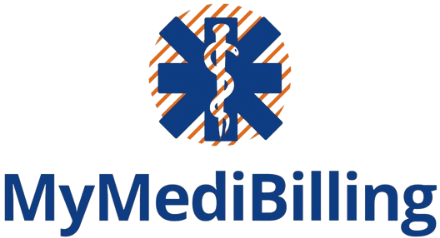Introduction
Patient billing is a vital component of the healthcare industry, encompassing the process of invoicing patients for the medical services they receive, ranging from routine check-ups to complex surgical interventions. A thorough understanding of patient billing is essential for healthcare providers to ensure they receive fair compensation for their services and that patients are not faced with unexpected financial burdens. A crucial aspect of patient billing involves understanding the various types of charges patients may incur, including fees for office visits, diagnostic tests, procedures, and medications.
Healthcare providers must communicate these charges to patients, ensuring they comprehend their financial obligations. Furthermore, understanding the diverse payment options available to patients, such as insurance coverage, out-of-pocket expenses, and payment plans, is vital for effective patient billing management. In addition to understanding charges and payment options, healthcare providers must be familiar with the industry’s billing codes and terminology.
This includes Current Procedural Terminology (CPT) codes, Healthcare Common Procedure Coding System (HCPCS) codes, and International Classification of Diseases (ICD) codes. Accurate coding and documentation of services are critical for precise billing and reimbursement, making it essential for healthcare providers to stay current with the latest coding guidelines and regulations.
Key Takeaways
- Understanding the basics of patient billing is crucial for a successful billing process.
- Navigating insurance and reimbursement requires knowledge of the different processes and requirements.
- Best practices for coding and documentation are essential for accurate billing and reimbursement.
- Effective communication with patients is key to ensuring a smooth billing process and patient satisfaction.
- Managing accounts receivable and collections is important for maintaining a healthy revenue cycle.
Navigating Insurance and Reimbursement
Understanding Insurance Plans
Healthcare providers must be knowledgeable about the various types of insurance plans, including private insurance, Medicare, Medicaid, and other government-sponsored programs. It is essential to understand the specific coverage and reimbursement policies of each plan to accurately bill and collect payments from insurance companies.
The Claims Submission Process
In addition to understanding insurance plans, healthcare providers must also be familiar with the process of submitting claims for reimbursement. This involves ensuring that claims are submitted accurately and in a timely manner, as well as following up on any denied or rejected claims. Effective communication with insurance companies is crucial for resolving any issues or discrepancies that may arise during the reimbursement process.
Regulatory Compliance and Industry Standards
Furthermore, healthcare providers must be aware of the various regulations and guidelines that govern insurance and reimbursement, such as the Health Insurance Portability and Accountability Act (HIPAA) and the Affordable Care Act (ACA). Staying compliant with these regulations is essential for avoiding potential legal and financial repercussions, making it imperative for healthcare providers to stay informed on the latest industry standards and best practices.
Best Practices for Coding and Documentation
Coding and documentation are fundamental aspects of patient billing, as they directly impact the accuracy and efficiency of the billing process. Healthcare providers must adhere to best practices for coding and documentation to ensure that services are properly documented and billed, ultimately leading to timely and accurate reimbursement. One best practice for coding and documentation is to ensure that all services provided to patients are accurately documented in their medical records.
This includes recording detailed information about the services rendered, such as the date of service, the specific procedures performed, any medications prescribed, and any follow-up care instructions given to the patient. Accurate documentation is essential for supporting the services billed and providing a clear record of patient care. Another best practice for coding and documentation is to stay up-to-date on the latest coding guidelines and regulations.
This includes regularly reviewing coding manuals and resources, attending training sessions or workshops on coding updates, and seeking guidance from coding experts when necessary. Staying informed on coding changes and updates is essential for accurately coding services and avoiding potential billing errors or discrepancies.
Strategies for Effective Communication with Patients
| Metrics | Data |
|---|---|
| Number of Patients Billed | 500 |
| Percentage of Paid Invoices | 85% |
| Average Billing Cycle | 30 days |
| Outstanding Balances | 10,000 |
Effective communication with patients is a critical component of patient billing, as it directly impacts patients’ understanding of their financial responsibilities and their willingness to pay for services received. Healthcare providers must employ strategies for effective communication with patients to ensure that they are well informed about their billing obligations and are able to navigate the billing process with ease. One strategy for effective communication with patients is to provide clear and transparent information about charges and payment options.
This includes discussing charges with patients before services are rendered, providing written estimates of costs when possible, and offering guidance on available payment options, such as insurance coverage or payment plans. Clear communication about financial responsibilities can help alleviate any confusion or anxiety that patients may have about their bills. Another strategy for effective communication with patients is to offer support and guidance throughout the billing process.
This includes providing resources or assistance for navigating insurance coverage, answering any questions or concerns that patients may have about their bills, and offering flexibility in payment arrangements when necessary. By demonstrating empathy and understanding toward patients’ financial situations, healthcare providers can build trust and rapport with their patients, ultimately leading to improved patient satisfaction and payment compliance.
Managing Accounts Receivable and Collections
Managing accounts receivable and collections is a critical aspect of patient billing, as it directly impacts a healthcare provider’s financial stability and cash flow. Healthcare providers must implement effective strategies for managing accounts receivable and collections to ensure that outstanding balances are collected promptly and that cash flow is optimized. One strategy for managing accounts receivable is to establish clear policies and procedures for billing and collections.
This includes setting clear expectations for when payments are due, offering incentives for prompt payment, and establishing protocols for following up on overdue accounts. By implementing consistent and transparent billing practices, healthcare providers can minimize the risk of unpaid balances and improve their overall collection rates. Another strategy for managing accounts receivable is to leverage technology to streamline billing processes and improve collection efforts.
This includes utilizing electronic billing systems, automated payment reminders, and online payment portals to facilitate efficient billing and payment transactions. By leveraging technology, healthcare providers can reduce administrative burdens associated with manual billing processes and improve the overall efficiency of their collections efforts.
Utilizing Technology for Streamlined Billing Processes
Electronic Health Record (EHR) Systems
One effective way to leverage technology for streamlined billing processes is by implementing electronic health record (EHR) systems. These systems offer comprehensive solutions for managing patient information, documenting services rendered, and submitting claims for reimbursement. By utilizing EHR systems, healthcare providers can simplify their billing processes, reduce administrative burdens, and improve the accuracy of their billing documentation.
Revenue Cycle Management (RCM) Software
Another way to utilize technology for streamlined billing processes is by implementing revenue cycle management (RCM) software. This software provides advanced tools for managing claims processing, tracking accounts receivable, and analyzing financial performance. By leveraging RCM software, healthcare providers can gain valuable insights into their billing operations, identify areas for improvement, and optimize their overall revenue cycle management.
Optimizing Financial Performance
By embracing technology, healthcare providers can significantly improve their financial performance. With streamlined billing processes, reduced administrative burdens, and improved accuracy, healthcare providers can focus on what matters most – delivering high-quality patient care.
Compliance and Regulatory Considerations in Patient Billing
Compliance with industry regulations and guidelines is critical in patient billing, as it directly impacts a healthcare provider’s legal and financial standing. Healthcare providers must stay informed on the latest compliance requirements and regulatory considerations to ensure that they are operating within legal boundaries and avoiding potential penalties or liabilities. One key compliance consideration in patient billing is adherence to HIPAA regulations.
HIPAA establishes strict guidelines for protecting patient privacy and security, particularly to electronic health information. Healthcare providers must implement robust security measures to safeguard patient data, such as encryption protocols, access controls, and regular security audits. By maintaining compliance with HIPAA regulations, healthcare providers can mitigate the risk of data breaches or unauthorized disclosures of patient information.
Another compliance consideration in patient billing is adherence to fraud and abuse laws. Healthcare providers must be vigilant in identifying potential instances of fraud or abuse in their billing practices, such as upcoding services or submitting false claims. By implementing internal controls, conducting regular audits, and providing ongoing training on fraud prevention, healthcare providers can minimize the risk of fraudulent activities and ensure compliance with anti-fraud laws.
Conclusion
Mastering patient billing requires a comprehensive understanding of the various components of the billing process, from understanding charges and payment options to navigating insurance reimbursement. Healthcare providers must adhere to best practices for coding and documentation, employ effective communication strategies with patients, manage accounts receivable and collections efficiently, utilize technology for streamlined billing processes, and stay compliant with industry regulations. By mastering patient billing, healthcare providers can optimize their financial performance while ensuring patients receive clear and transparent information about their financial responsibilities.


